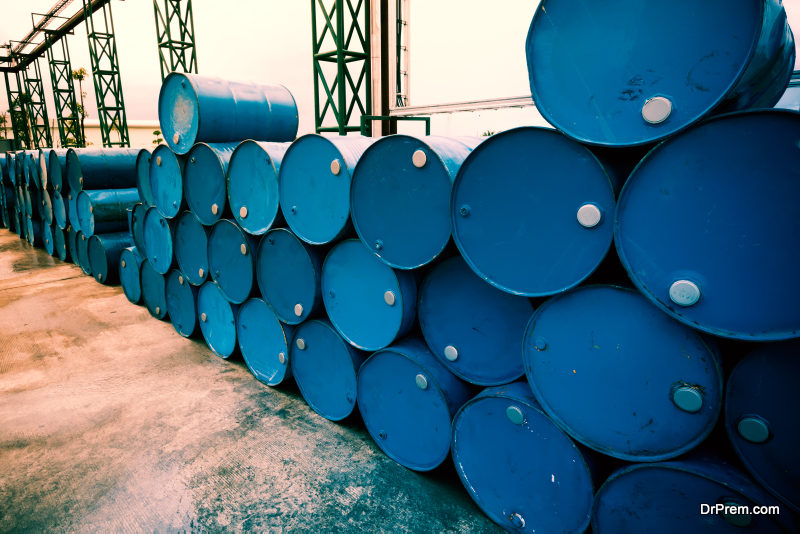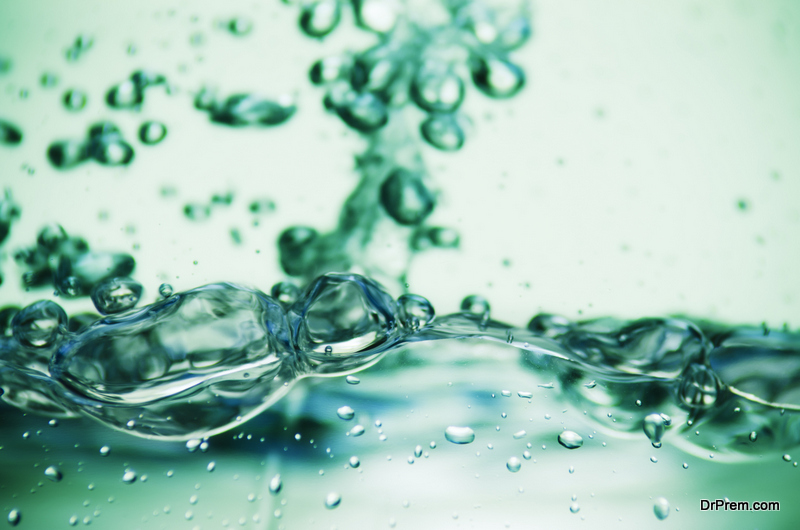Biodegradable hydraulic fluid is a suitable and safer replacement for traditional hydraulic fluids. Using biodegradable fluids minimizes the damage caused by leaks and spills. If you use hydraulic equipment and you haven’t switched to biodegradable fluids, it’s worth considering.
Leaks and spills not only harm the environment, but generate hefty fines from the EPA and other governing agencies. In today’s environmentally-aware world, it’s not worth the risk.
You might be wondering if you need to upgrade your entire rig to use biodegradable fluids, and the answer is no. You might need to swap out some components like seals and gaskets, but you don’t necessarily have to purchase brand new equipment.
You can use old equipment with eco-friendly fluids
 Using biodegradable fluid doesn’t give you a free pass to ignore leaks. Even if your fluid doesn’t harm the environment, you don’t want to waste it.
Using biodegradable fluid doesn’t give you a free pass to ignore leaks. Even if your fluid doesn’t harm the environment, you don’t want to waste it.
If you’re connecting old equipment to new equipment, it’s imperative to use properly fitting couplers and adapters to minimize the potential for leaks. You can also get adapters specifically designed to connect old and new equipment and prevent the need to change mismatched couplers.
If you’re using leak-free components, you might think switching to biodegradable fluid isn’t necessary. However, leak-free adapters shouldn’t be your only insurance policy against harming the environment (and avoiding fines).
Leak-free technology isn’t rupture-proof
Hydraulic hoses and connectors are manufactured more efficiently than ever, but there’s always a possibility for some kind of leak or rupture that will spill fluid. Accidents happen; using high-quality equipment isn’t enough. Using biodegradable fluid is the only way to be absolutely certain your machinery doesn’t cause harm to the environment.
The different types of biodegradable hydraulic fluids available
 There are four main types of environmentally-friendly hydraulic fluids:
There are four main types of environmentally-friendly hydraulic fluids:
- HETG fluids (hydraulic environmental triglyceride). These fluids are water insoluble triglycerides sourced from vegetable and animal oils. Soybean, sunflower, and rapeseed oil are the most common sources. While HETG fluids are nontoxic and make excellent lubricants, they don’t maintain thermal or hydrolytic stability well. Under high temperatures these oils quickly oxidate, thicken, and they cost twice as much as mineral oils.
- HEES fluids (hydraulic environmental ester synthetic). These fluids are water insoluble esters sourced from petroleum and vegetable oil feedstocks. HEES fluids last for a long time due to high thermal and oxidative stability.These fluids flow exceptionally well at low temperatures and can be found in various viscosities. The downside is HEES fluids are expensive and require a special setup. They’re also not as biodegradable as other options.
- HEPG fluids (hydraulic environmental ply glycol). These fluids can be both water soluble and water insoluble, depending on the source. HEPG fluids are essentially polymers derived from a chemical reaction between glycol and either ethylene oxide, propylene glycol, or propylene oxide.HEPG fluids are fire resistant, but they’re not entirely biodegradable and like HEES fluids, they require a special system design to use. For instance, HEES fluids won’t work with polyurethane seals.
- HEPR fluids. (hydraulic environmental plyalphaolefin). These fluids are water insoluble, and only the low viscosity versions are environmentally friendly. These fluids prevent corrosion, are fantastic lubricants and last for a long time. They can also operate under a wide range of temperatures. He downside is they’re expensive and incompatible with certain seals and gaskets.
How bad is traditional hydraulic fluid?
Traditional hydraulic fluid is extremely toxic to the environment and unfortunately, it seeps into the earth through leaks and spills on land and water. Some spills are worse than others, and officials are just starting to realize there’s no way to completely clean up a spill.
Fluid spills in the ocean have a long-lasting environmental impact
 In 1946, a United States Army transport ship was on a routine mission to deliver military cargo from Washington state to Alaska. The ship ran aground and sank with 700 tons of bunker C fuel oil, 100 tons of miscellaneous pollutants like gas, turpentine, paint, oil, and carbon tetrachloride. Nobody mounted a cleanup mission and nearly sixty years later in 2003, oil began rising from the wreck and created rainbow sheens on the surface of the water.
In 1946, a United States Army transport ship was on a routine mission to deliver military cargo from Washington state to Alaska. The ship ran aground and sank with 700 tons of bunker C fuel oil, 100 tons of miscellaneous pollutants like gas, turpentine, paint, oil, and carbon tetrachloride. Nobody mounted a cleanup mission and nearly sixty years later in 2003, oil began rising from the wreck and created rainbow sheens on the surface of the water.
On March 22, 2006, a 125-meter vessel named Queen of the North sank, taking down 225,000 liters of diesel fuel, 15,000 liters of light oil, 3,200 liters of hydraulic fluid, and 3,200 liters of stern tube oil.
The above examples are sunken ships and not leaky equipment. However, consider that when the world switches to biodegradable, environmentally friendly fluids, that’s what ships will be carrying instead of the highly toxic, petroleum-based fluids. A massive spill might do some damage, but not nearly as much. Make the switch and be part of getting those toxic fluids off the ships.
Article Submitted By Community WriterLeaks and spills




